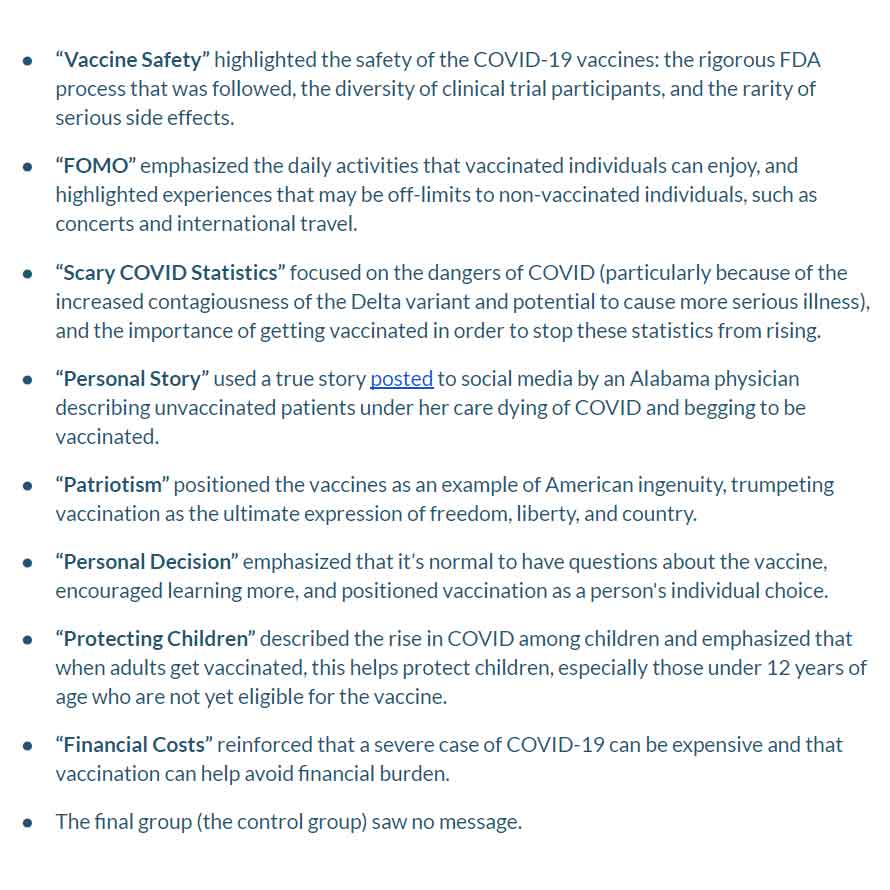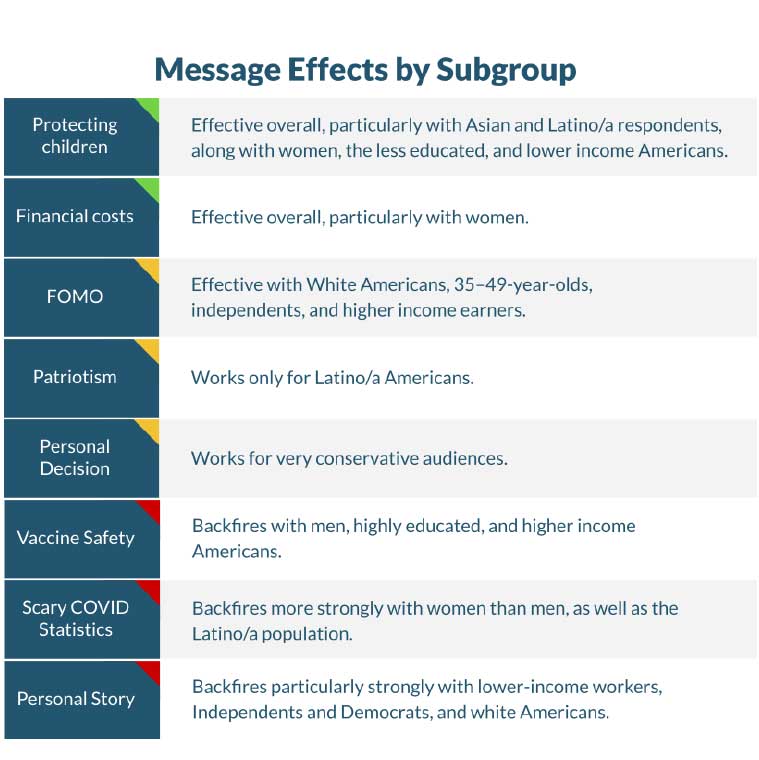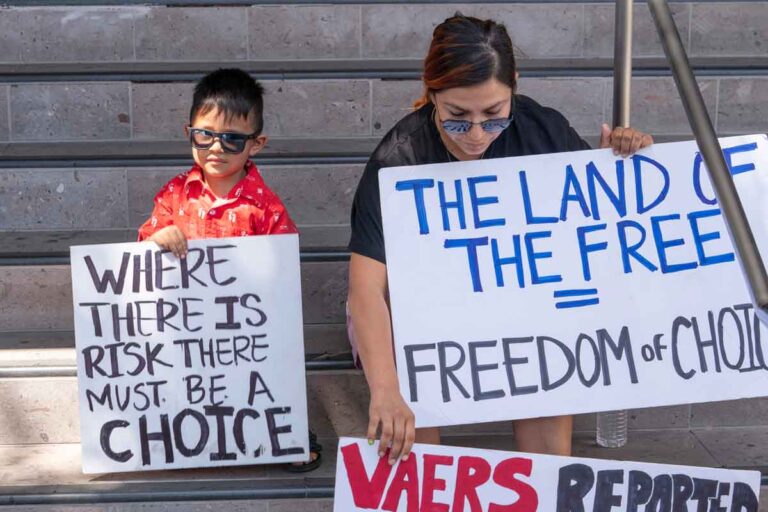CHICAGO — The messages that worked to persuade unvaccinated people to roll up their sleeves this spring may not work anymore. That’s according to new survey research, which also finds some pro-vaccine messages can backfire and lead to greater hesitancy.
The study was conducted by Civis Analytics — a Chicago-based technology company focused on data-driven audience campaigns. Throughout the COVID-19 pandemic, the group has been advising state public health officials and other entities on effectively promoting COVID-19 measures, like mask-wearing and vaccines.
The new findings also suggest that it’s more important now, than ever, to consider that the roughly 1 in 3 eligible U.S. residents who remain unvaccinated are not homogenous.
“They are diverse, they have different concerns, they come from different places,” says Crystal Son, an epidemiologist turned data scientist and healthcare analytics director for Civis Analytics.
“In order to convince people, you have to actually use the data to understand those people and not simply assume you know what they’ll be responsive to,” Son adds. “And what works for everybody, on average, is often different from what works for smaller subgroups of that population.”
Earlier this year — before the Delta variant emerged and mask mandates took effect — the most persuasive pro-vaccine messages were those that highlighted activities vaccinated people would be able to enjoy again, like concerts and international travel, Son says.
Messages emphasizing vaccines as a personal choice — and encouraging people to learn more — were also persuasive for many people earlier on.
But now, the messages most likely to be effective, across the board, are those focused on the need to protect children who are too young to be vaccinated — and also those emphasizing the financial costs associated with a COVID hospitalization.
Civis Analytics’ latest study involved 5,111 unvaccinated U.S. adults who participated in an online survey between Aug. 19 and Sept. 8, 2021.

Participants were then asked about their intent to get vaccinated, and researchers calculated the impact of different messaging approaches, compared to the control group.
“We borrow a lot of the principles of randomized controlled trial frameworks [used in] pharmaceuticals and medical testing,” Son says.
This kind of scientific approach to understanding vaccine hesitancy is important, she says, because when people are asked what’s keeping them from getting vaccinated, many will cite concerns about vaccine safety.
“Yet when we test this kind of message using our framework, we find that that message is usually at best ineffective — so it doesn’t persuade anybody to get vaccinated,” Son says, “and in a lot of cases, it actually can cause something called negative backlash” — which means the person is less likely to say they’ll get the vaccine after seeing the message.
Other messages that appear to cause negative backlash include those that present alarming COVID statistics or share a personal story of an unvaccinated person dying of COVID and wishing they’d been vaccinated.

One of the biggest takeaways from the new research is that the most persuasive messages have changed, Son says.
“In the beginning stages [of the vaccine rollout], when you have incredible demand, it can feel like your messaging is really working,” Son says. “But that could just be just pent-up demand. That doesn’t necessarily mean your messaging works.”
If entities interested in boosting vaccination rates continue using the same strategies deployed earlier in the pandemic, they’re not likely to succeed, she says.
One limitation of the study is that researchers used a person’s stated intent to get vaccinated as the measure whether a pro-vaccine message was persuasive.
“If we could design a perfect study, it would have, not only the question of intent, but [we’d say], ‘Here’s an appointment at a vaccine clinic; are you going to sign up to get vaccinated,” Son says. “So that’s a noted limitation… But asking about intent is the best surrogate that we have.”
While the study was focused on identifying effective strategies for public health messaging campaigns addressing vaccine hesitancy, the lessons could be applicable in other contexts, including one-on-one conversations.
“Repeatedly, we see that being negative in your messaging — trying to scare people into getting vaccinated because, you know, COVID is really scary and expensive and dangerous, or guilting people and saying [things] like, ‘Do it for your grandmother’ — those are not messages that we see to be persuasive,” Son says.
Using those kinds of tactics “isn’t something that we would recommend,” she adds, because it could cause vaccine-hesitant people to dig in their heels even more.
Read the full report on Civis Analytics’ website.
Christine Herman is a reporter at Illinois Public Media. Follow her on Twitter: @CTHerman

